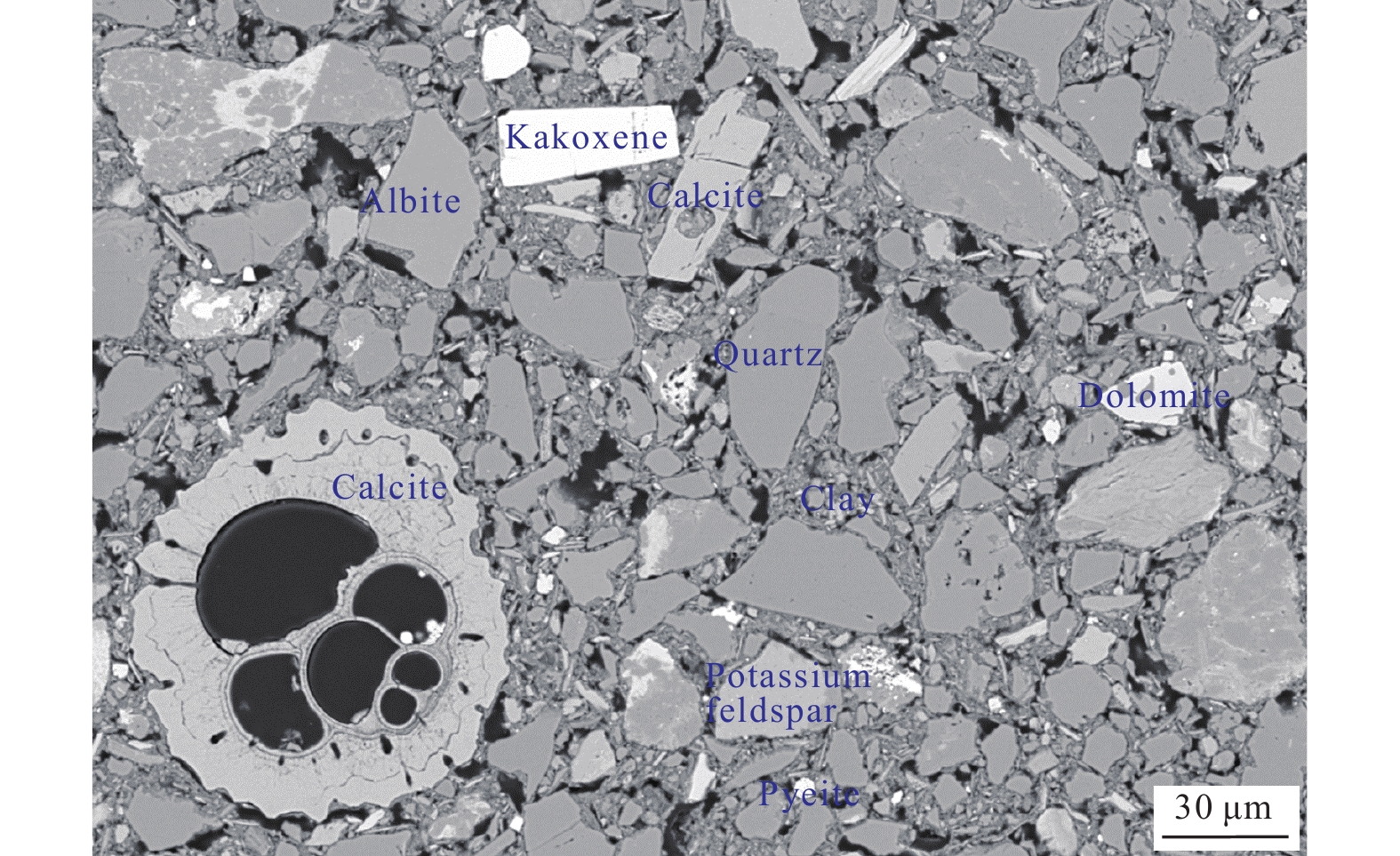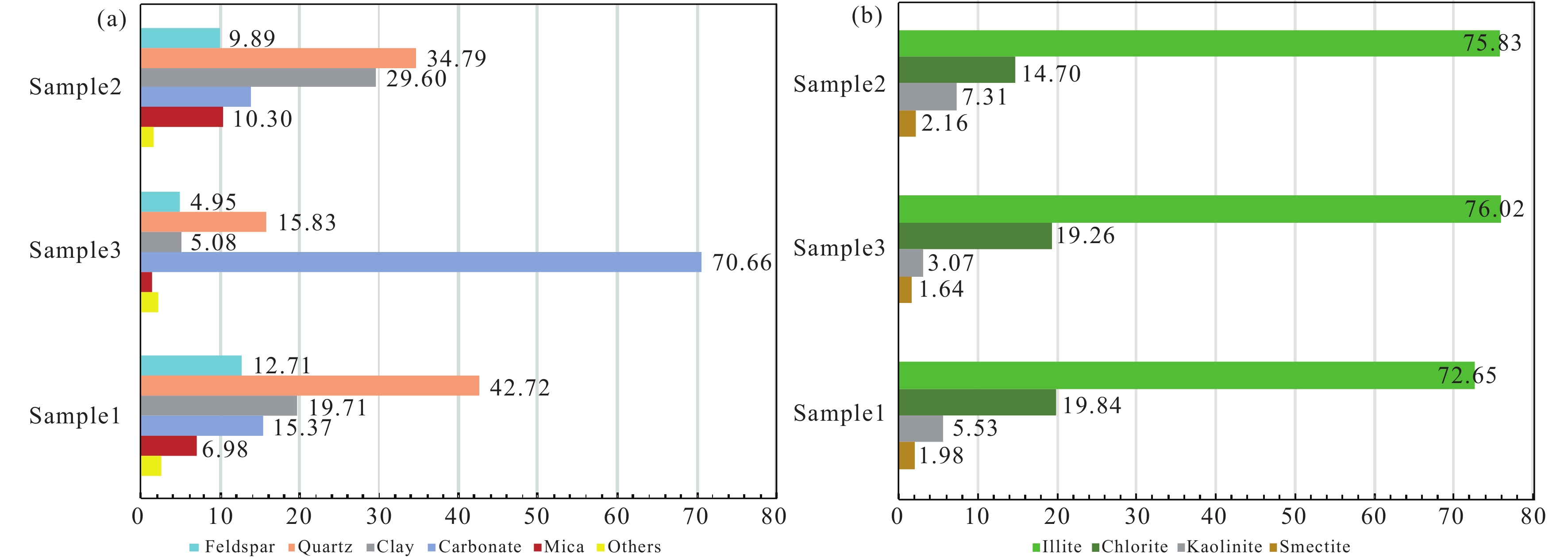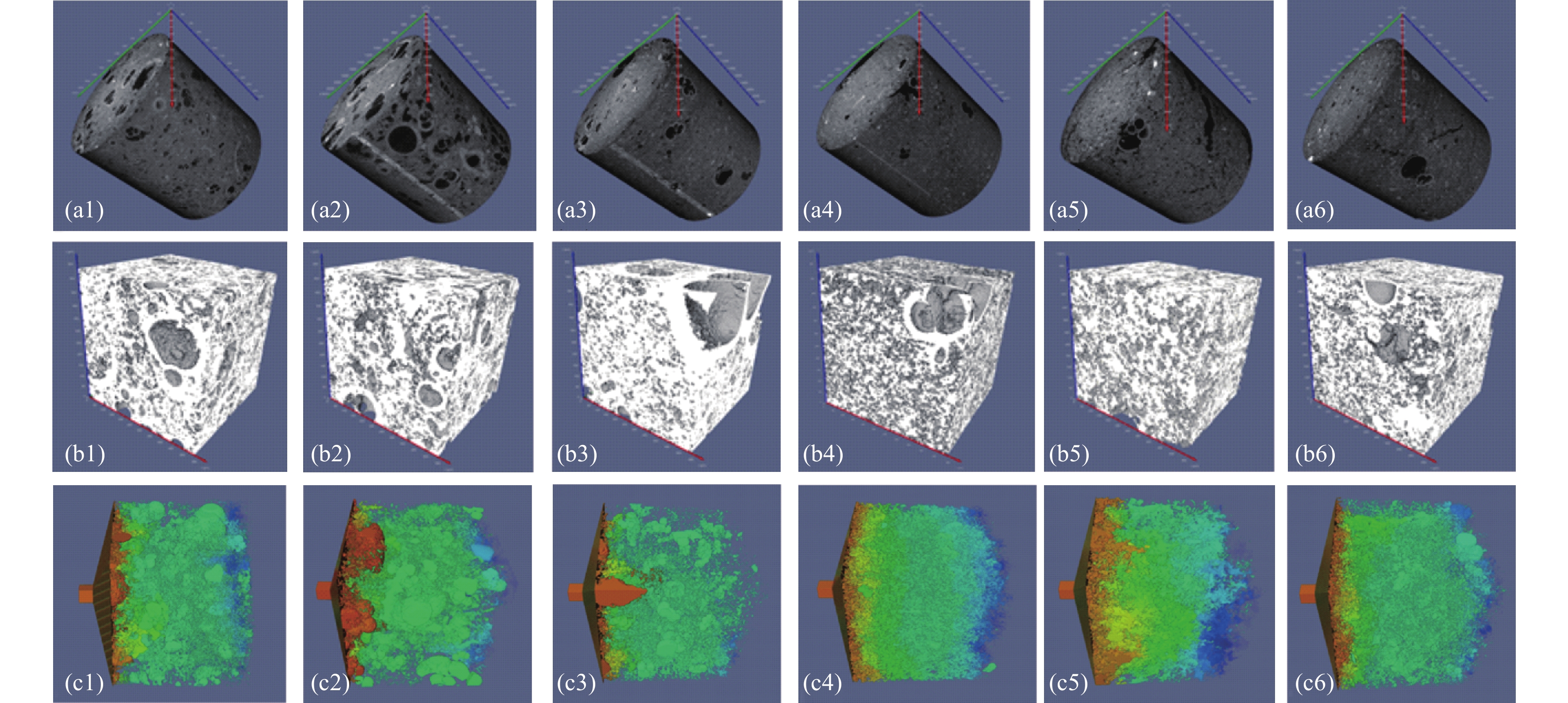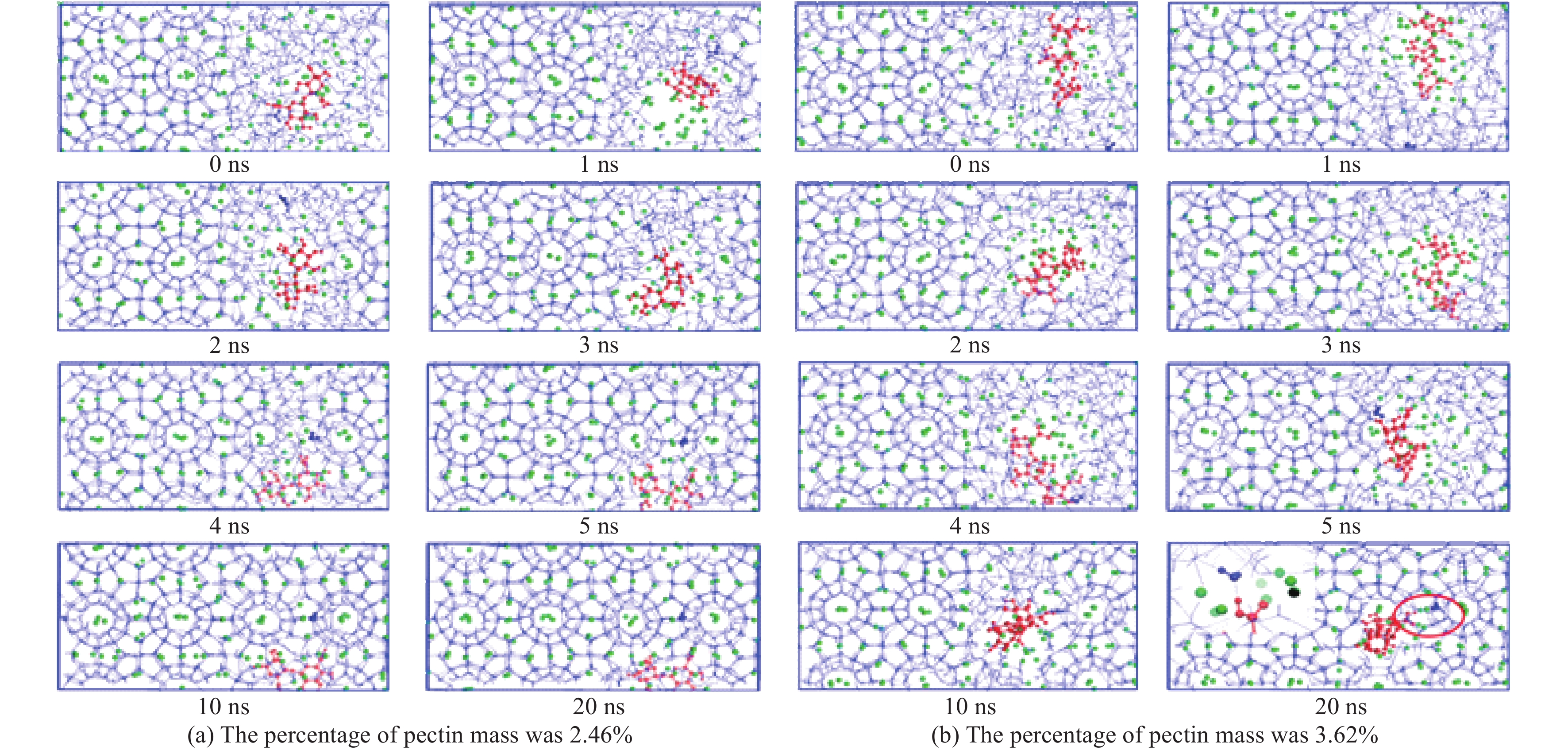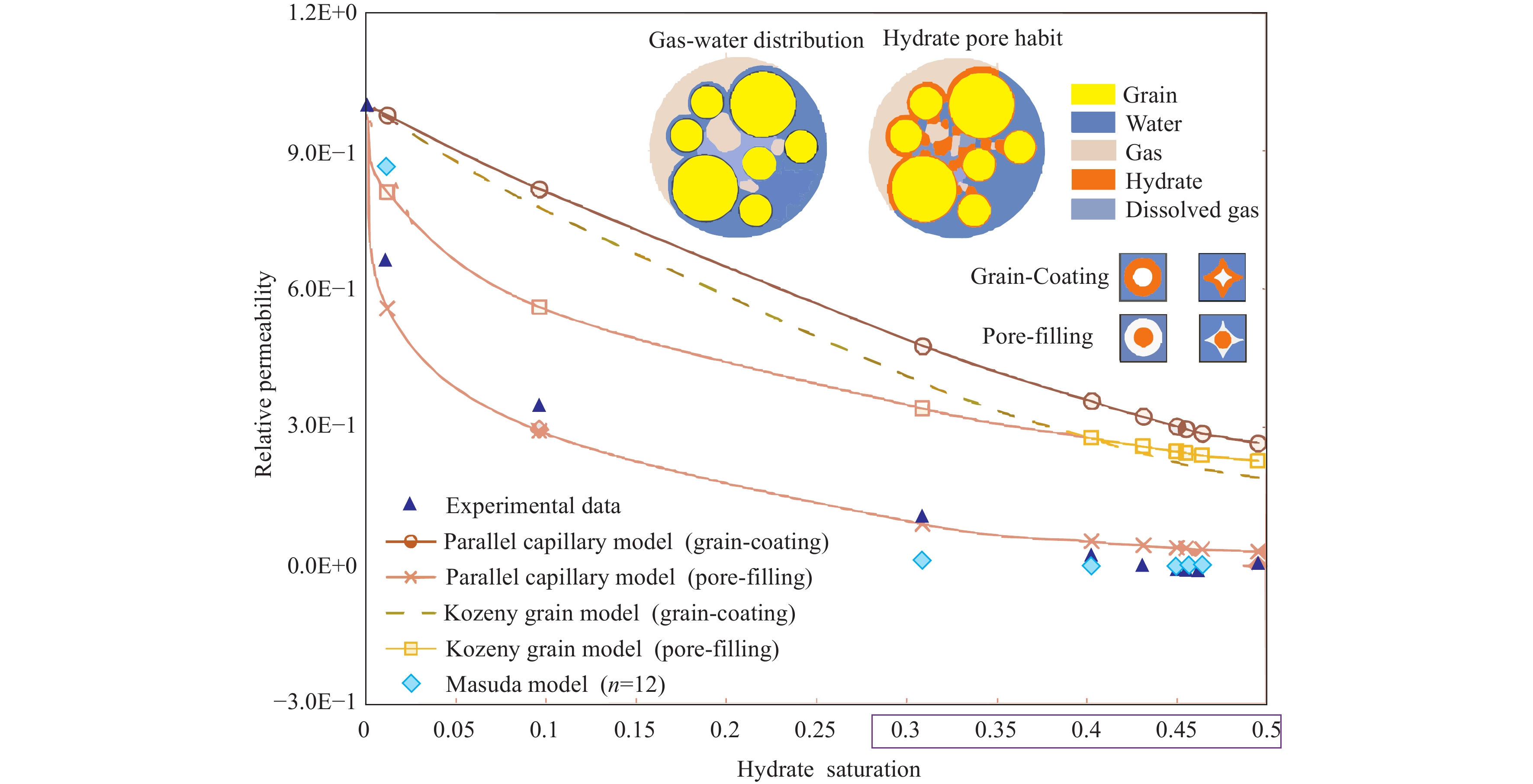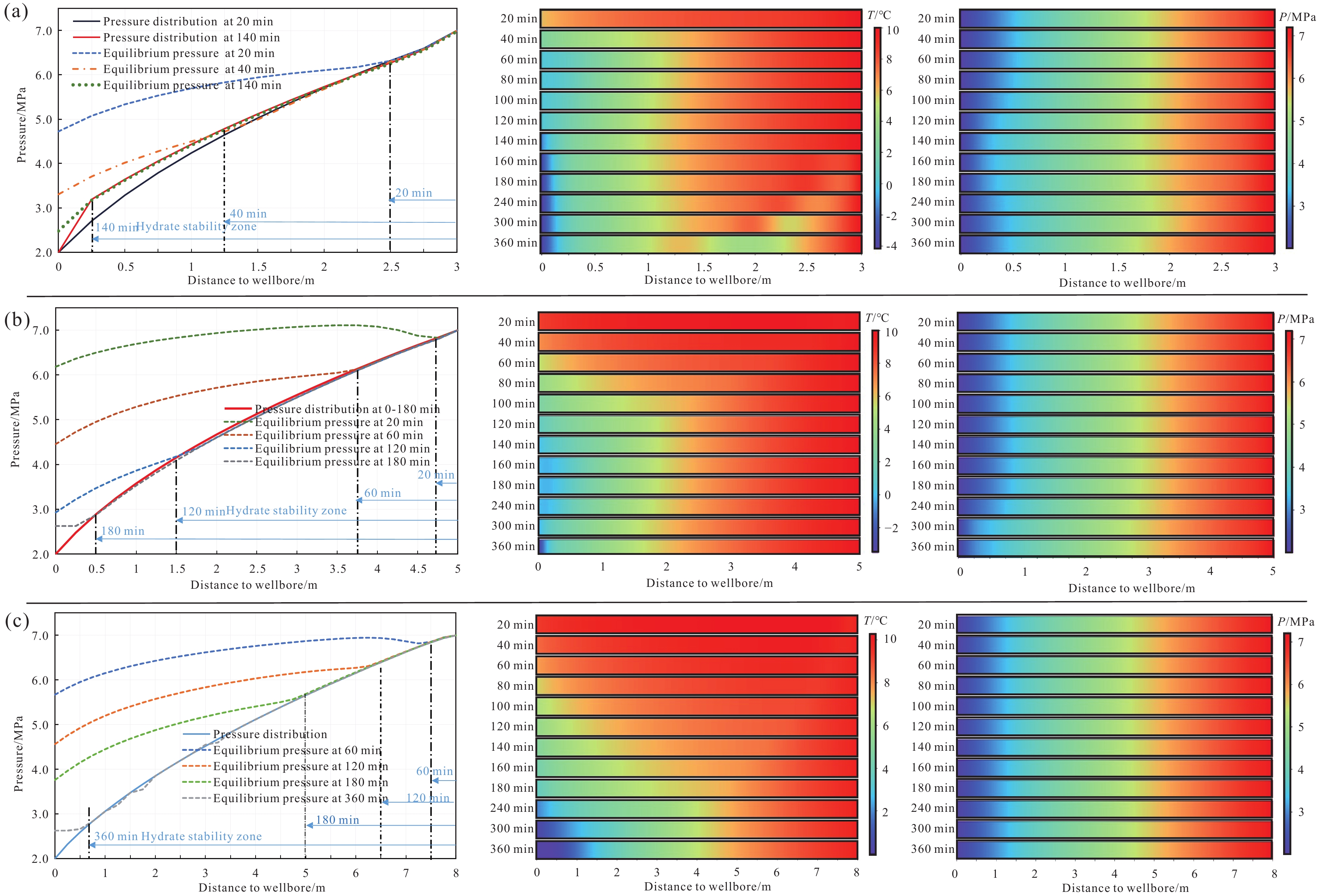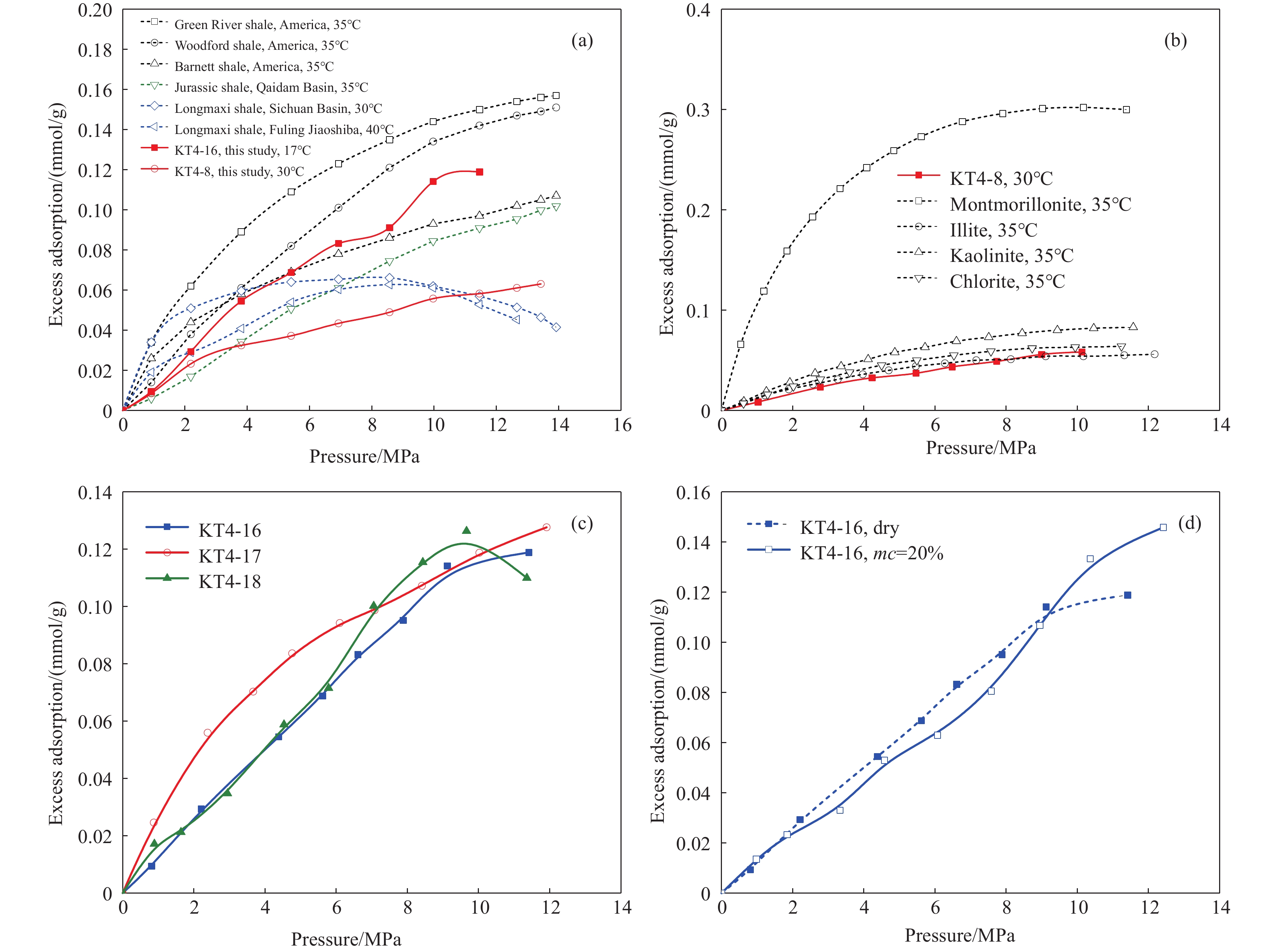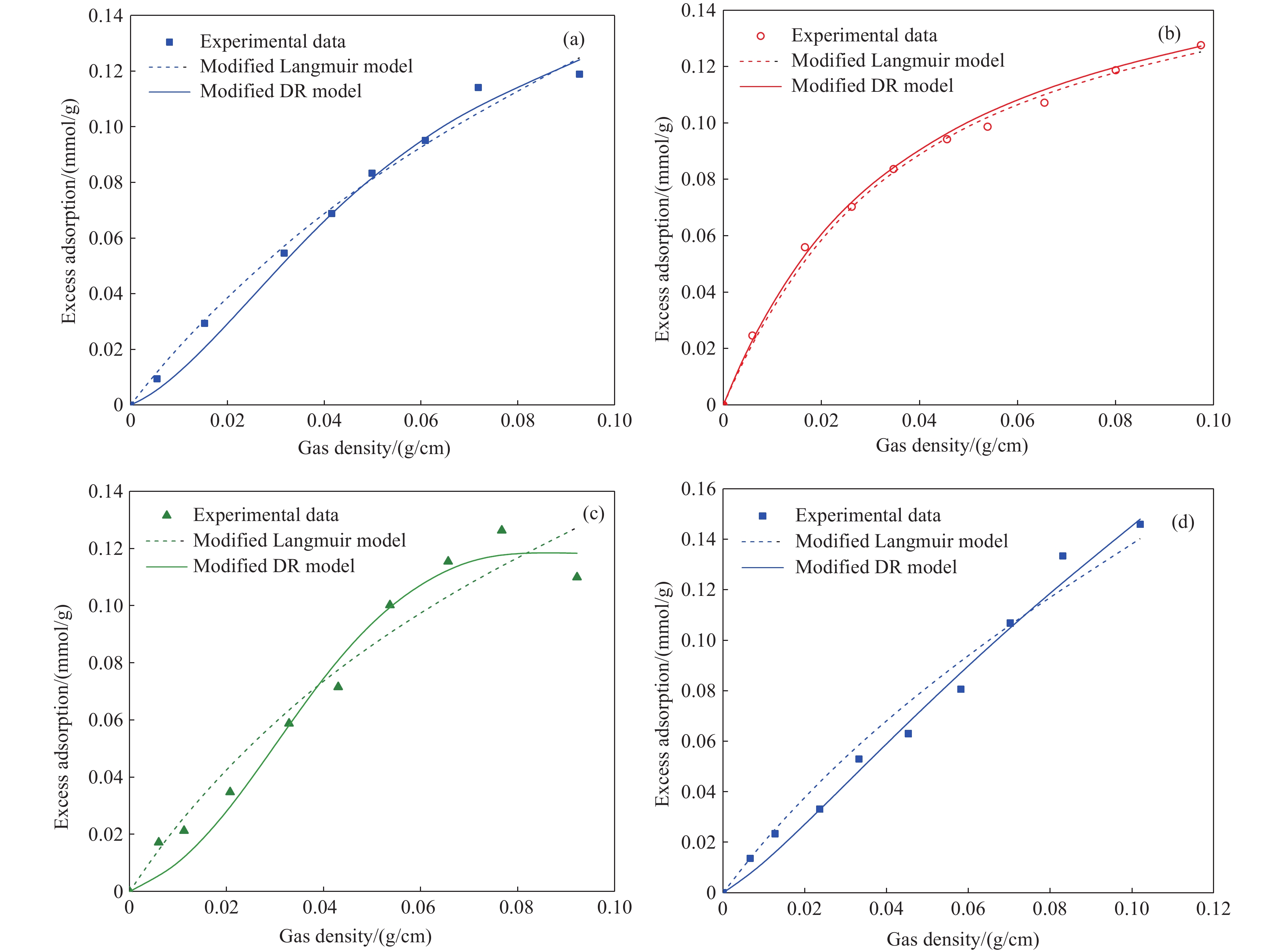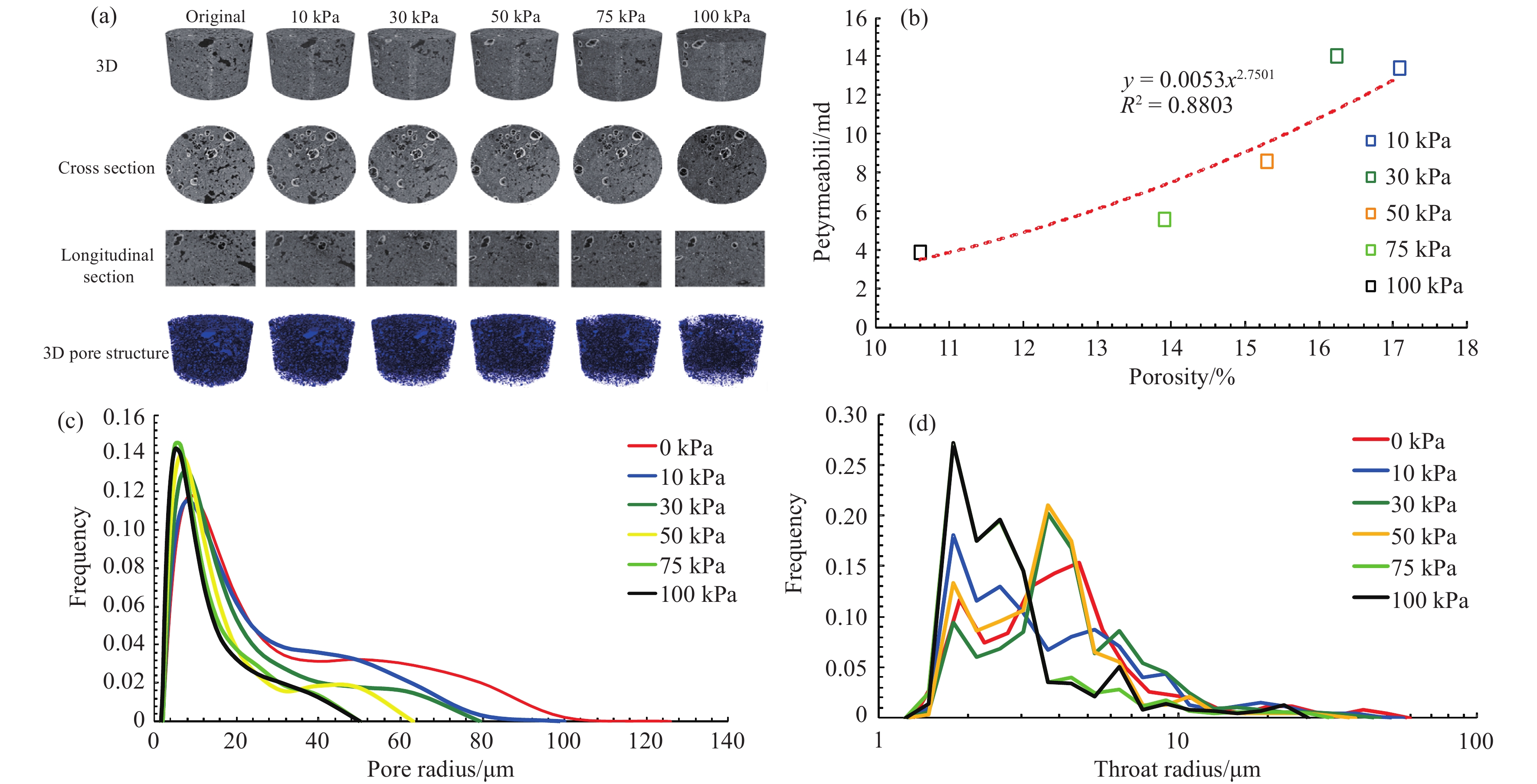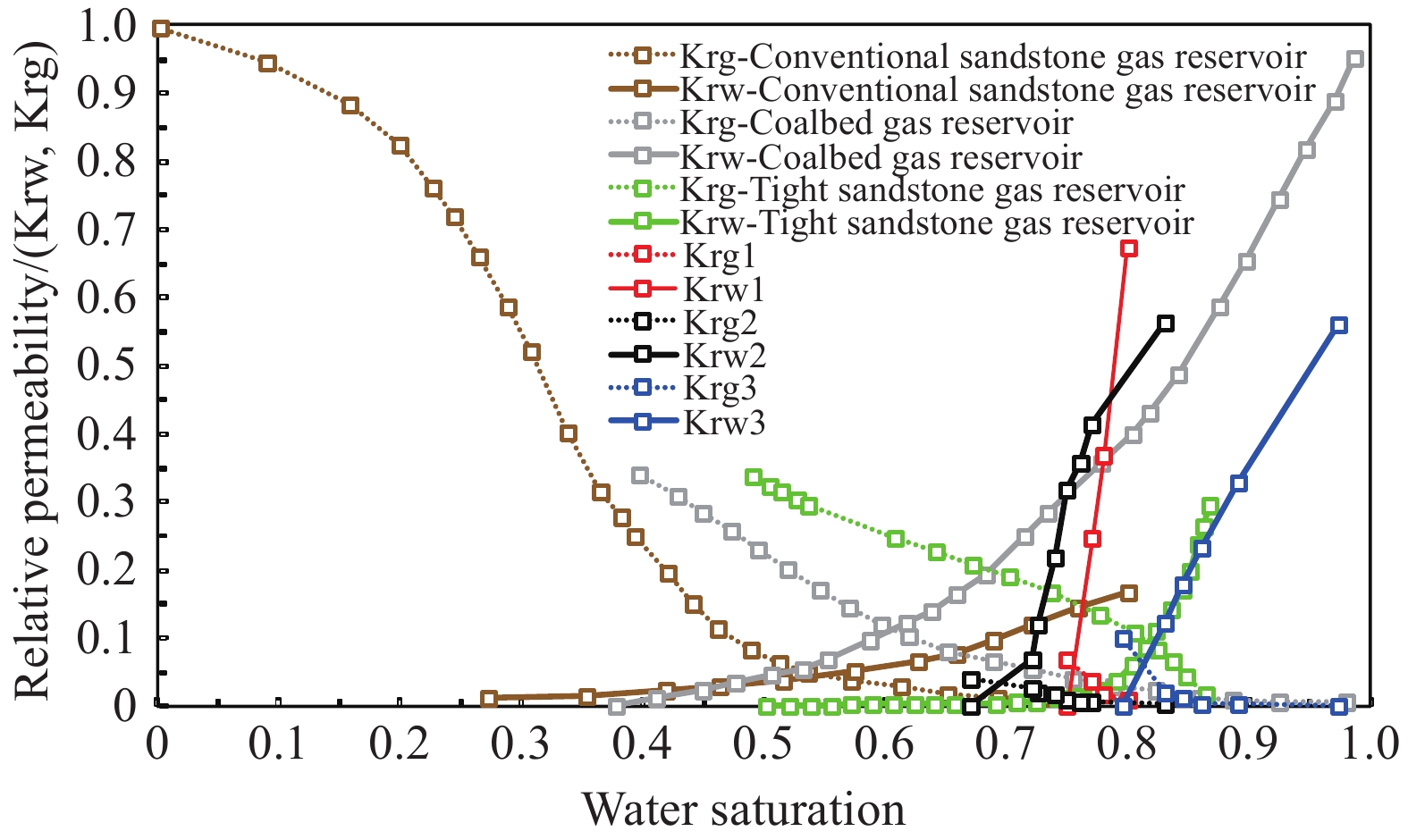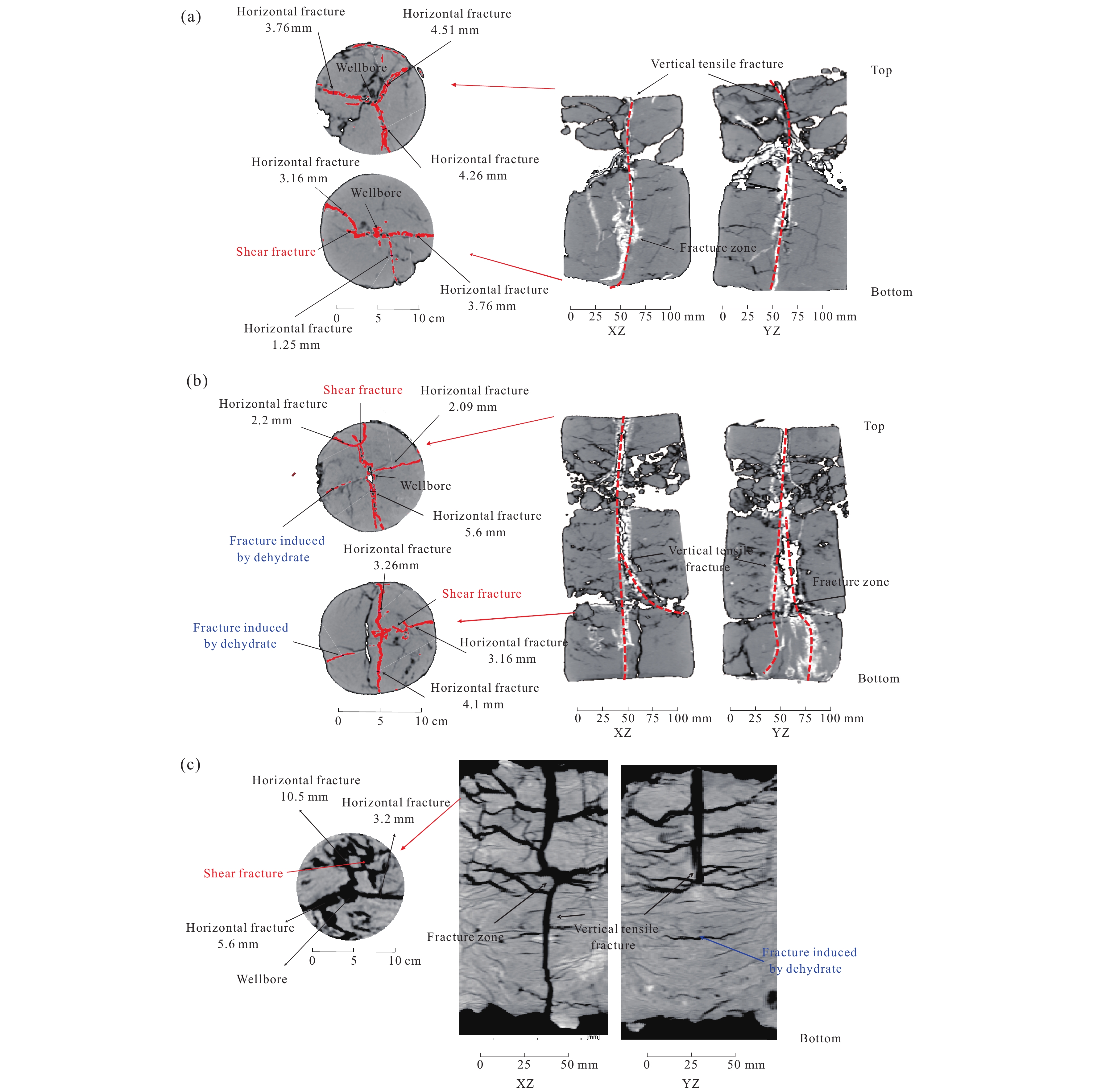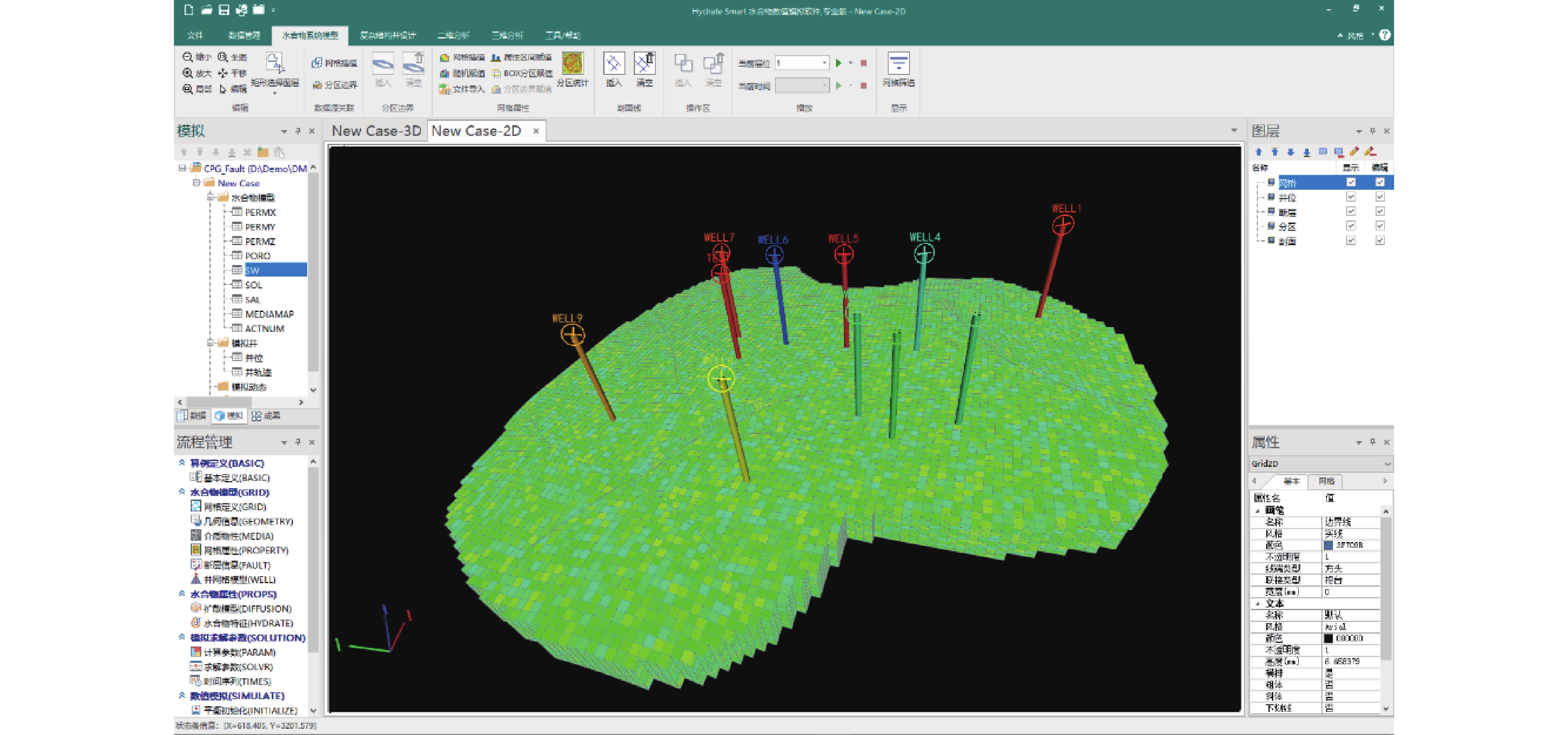| Citation: | Xu-wen Qin, Cheng Lu, Ping-kang Wang, Qian-yong Liang, 2022. Hydrate phase transition and seepage mechanism during natural gas hydrates production tests in the South China Sea: A review and prospect, China Geology, 5, 201-217. doi: 10.31035/cg2022029 |
Hydrate phase transition and seepage mechanism during natural gas hydrates production tests in the South China Sea: A review and prospect
-
Abstract
Natural gas hydrates (NGHs) are globally recognized as an important type of strategic alternative energy due to their high combustion efficiency, cleanness, and large amounts of resources. The NGHs reservoirs in the South China Sea (SCS) mainly consist of clayey silts. NGHs reservoirs of this type boast the largest distribution range and the highest percentage of resources among NGHs reservoirs in the world. However, they are more difficult to exploit than sandy reservoirs. The China Geological Survey successfully carried out two NGHs production tests in the Shenhu Area in the northern SCS in 2017 and 2020, setting multiple world records, such as the longest gas production time, the highest total gas production, and the highest average daily gas production, as well as achieving a series of innovative theoretical results. As suggested by the in-depth research on the two production tests, key factors that restrict the gas production efficiency of hydrate dissociation include reservoir structure characterization, hydrate phase transition, multiphase seepage and permeability enhancement, and the simulation and regulation of production capacity, among which the hydrate phase transition and seepage mechanism are crucial. Study results reveal that the hydrate phase transition in the SCS is characterized by low dissociation temperature, is prone to produce secondary hydrates in the reservoirs, and is a complex process under the combined effects of the seepage, stress, temperature, and chemical fields. The multiphase seepage is controlled by multiple factors such as the physical properties of unconsolidated reservoirs, the hydrate phase transition, and exploitation methods and is characterized by strong methane adsorption, abrupt changes in absolute permeability, and the weak flow capacity of gas. To ensure the long-term, stable, and efficient NGHs exploitation in the SCS, it is necessary to further enhance the reservoir seepage capacity and increase gas production through secondary reservoir stimulation based on initial reservoir stimulation. With the constant progress in the NGHs industrialization, great efforts should be made to tackle the difficulties, such as determining the micro-change in temperature and pressure, the response mechanisms of material-energy exchange, the methods for efficient NGHs dissociation, and the boundary conditions for the formation of secondary hydrates in the large-scale, long-term gas production.
-

-
References
Bian H, Xia YX, Lu C, Qin XW, Meng QB. 2020. Pore structure fractal characterization and permeability simulation of natural gas hydrate reservoir based on CT images. Geofluids, 6934691. doi: 10.1155/2020/6934691. Cai JC, Hu XY. 2015. Fractal Theory in Porous Media and Its Applications. Science Press (in Chinese). Cai JC, Xia YX, Lu C, Bian H, Zou SG. 2020. Creeping microstructure and fractal permeability model of natural gas hydrate reservoir. Marine and Petroleum Geology, 115, 104282. doi: 10.1016/j.marpetgeo.2020.104282. Cai JC, Xia YX, Xu S, Tian HT. 2020. Advances in multiphase seepage characteristics of natural gas hydrate sediments. Chinese Journal of Theoretical and Applied Mechanics, 52(1), 208–223. doi: 10.6052/0459-1879-19-362. Cao YQ. 2017. Fracability of Reservoirs in Frozen Soil. Qingdao, China University of Petroleum (East China), Ph. D thesis, 21–69 (in Chinese with English abstract). Chaouachi M, Falenty A, Sell K. 2015. Microstructural evolution of gas hydrates in sedimentary matrices observed with synchrotron X-ray computed tomographic. Geochemistry, Geophysics, Geosystems, 16 (6), 1711–1722. doi: 10.1002/2015GC005811. Chen L, Feng YC, Kogawa T. 2018. Construction and simulation of reservoir scale layered model for production and utilization of methane hydrate: The case of Nankai Trough Japan. Energy, 143, 128–140. doi: 10.1016/j.energy.2017.10.108. Chen Q, Hu GW, Li YL, Wan YZ, Liu CL, Wu NY, Liu Y. 2020. A prospect review of new technology for development of marine gas hydrate resources. Marine Geology Frontiers, 36(9), 44–55. doi: 10.16028/j.1009-2722.2020.081. Fan ZB, Sun CM, Kuang YM. 2017. MRI analysis for methane hydrate dissociation by depressurization and the concomitant ice generation. Energy Procedia, 105, 4763–4768. doi: 10.1016/j.egypro.2017.03.1038. Gao DL. 2020. Discussin on development modes and engineering techniques for deepwater natural gas and its hydrates. Natural Gas Industry, 40(8), 136–143. doi: 10.3787/j.issn.1000-0976.2020.08.014. Geng LT, Cai J, Lu C, Qin XW, Qi RR, Meng FL, Xie Y, Sha ZB, Wang XH, Sun CY. 2021. Phase equilibria of natural gas hydrates in bulk brine and marine sediments from the South China Sea. Journal of Chemical and Engineering Data, 66, 4064–4074. doi: 10.1021/acs.jced.1c00307. Hauge LP, Birkedal KA, Ersland G, Graue A. 2014. Methane production from natural gas hydrates by CO2 replacement-review of lab experiments and field trial. Proceedings of the SPE Bergen One Day Seminar, SPE–169198-MS. doi: 10.2118/169198-MS. Heeschen KU, Schicks JM, Oeltzschner G. 2016. The promoting effect of natural sand on methane hydrate formation: Grain sizes and mineral composition. Fuel, 181, 139–147. doi: 10.1016/j.fuel.2016.04.017. Khurana M, Yin Z, Linga P. 2017. A review of clathrate hydrate nucleation. ACS Sustainable Chemistry and Engineering, 5(12), 11176–11203. doi: 10.1021/acssuschemeng.7b03238. Kondori J, Zendehboudi S, Hossain ME. 2017. A review on simulation of methane production from gas hydrate reservoirs: Molecular dynamics prospective. Journal of Petroleum Science and Engineering, 159, 754–772. doi: 10.1016/j.petrol.2017.09.073. Kumar SawV, Udayabhanu G, Mandal A, Laik S. 2015. Methane Hydrate Formation and Dissociation in the Presence of Silica Sand and Bentonite Clay. Oil Gas Sci. Technol., 70, 1087–1099. doi: 10.2516/ogst/2013200. Lei X, Yao YB, Qin XW, Lu C, Luo WJ, Wen ZA, Yuan XH. 2022. Pore structure changes induced by hydrate dissociation: An example of the unconsolidated clayey-silty hydrate bearing sediment reservoir in the South China Sea. Marine Geology, 443, 106689. doi: 10.1016/j.margeo.2021.106689. Li JF, Ye JL, Qin XW, Qiu HJ, Wu NY, Lu HL, Xie WW, Lu JA, Peng F, Xu ZQ, Lu C, Kuang ZG, Wei JG, Liang QY, Lu HF, Kou BB. 2018. The first offshore natural gas hydrate production test in South China Sea. China Geology, 1, 5–16. doi: 10.31035/cg2018003. Li SD, Li X, Wang SJ, Sun YM. 2020. A novel method for natural gas hydrate production: depressurization and backfilling with in-situ supple-mental heat. Journal of Engineering Geology, 28(2), 282–293. doi: 10.13544/j.cnki.jeg.2020-061. Li SX, Guo SP, Chen MY, Zhang NT, Wu DD. 2020. Advances and recommendations for multi-field characteristics and coupling seepage in natural gas hydrate development. Chinese Journal of Theoretical and Applied Mechanics, 2020,52(3), 828–842. doi: 10.6052/0459-1879-20-050. Li SX, Wang ZQ, Li S. 2021. Investigations on performance of hydrate dissociation by depressurization near the quadruple point. Journal of Natural Gas Science and Engineering, 90, 1–12. doi: 10.1016/j.jngse.2021.103929. Li XS. 2008. Progress in researches on exploration and exploitation for natural gas hydrate. Modern Chemical Industry, 28(6), 1–15. doi: 10.16606/j.cnki.issn0253-4320.2008.06.019. Li Z, Tian X, Li Z, Xu J, Zhang H, Wang D. 2020. Experimental study on growth characteristics of pore-scale methane hydrate. Energy Reports, 6, 933–943. doi: 10.1016/j.egyr.2020.04.017. Liu W, Cui S, Wang Z, Ding B. 2019. Research progress on adsorbent materials for gas hydrate exploitation by displacement method. Modern Chemical Industry, 11, 53–57. doi: 10.16606/j.cnki.issn0253-4320.2019.11.012. Liu W, Wang S, Yang M, Song Y, Wang S, Zhao J. 2015. Investigation of the induction time for THF hydrate formation in porous media. Journal of Natural Gas Science and Engineering, 24, 357–364. doi: 10.1016/j.jngse.2015.03.030. Lu C, Ma C, Geng LT, Yu L, Bian H, Qi RR, Xing DH, Mao WJ, Meng FL. 2021. Device for simulating the formation and evolution of NGH inverse phase transition. 2021.08. 17, China, ZL202023152284.6. Lu C, Qin XW, Ma C, Bian H, Cui YD, Rao Y. 2020. Onsite data analysis platform for hydrate production and tests—Hydrate Captain V1. 0. 2020. 01. 3, 2020SR0916459. Lu C, Qin XW, Mao WJ, Ma C, Geng LT, Yu L, Bian H, Meng F, Qi RR. 2021. Experimental study on the propagation characteristics of hydraulic fracture in clayey-silt sediments. Geofluids, 6698649. doi: 10.1155/2021/6698649. Lu C, Qin XW, Yu L, Geng LT, Mao WG, Bian H, Meng F. 2021. The characteristics of gas-water two-phase radial flow in clay-silt sediment and effects on hydrate production, Geofluids, 6623802. doi: 10.1155/2021/6623802. Lu C, Sun XX, Li ZZ, Ma C, Wang JL, Geng LT, Zhang Kw. 2019. Simulation system for the radial flow in geological reservoirs. 2019.09. 17, China, ZL201821818171.5. Lu C, Xia YX, Sun XX, Bian H, Qiu HJ, Lu HF, Luo WJ, Cai JC. 2019. Permeability evolution at various pressure gradients in natural gas hydrate reservoir at the Shenhu Area in the South China Sea. Energies, 12(19), 3688. doi: 10.3390/en12193688. Lu H, Matsumoto R. 2002. Preliminary experimental results of the stable P-T conditions of methane hydrate in a nannofossil-rich claystone column. Geochemical Journal, 36(1), 21–30. doi: 10.2343/geochemj.36.21. Lu HL, Shang SL, Cheng XJ, Qin XW, Gu LJ, Qiu HJ. 2021. Research progress and development direction of numerical simulator for natural gas hydrate development. Acta Petrolei Sinica, 42(11), 1516–1530. doi: 10.7623/syxb202111011. Luo TY, Feng Y, Hu RD, Shi YH. 2020. Fracturing technology of subsea gas hydrate reservoir. Drilling & Production Technology, 43(4), 67–70. Lü Q, Zang, XR, Li XS, Li G. 2018. Effect of seawater ions on cyclopentane-methane hydrate phase equilibrium. Fluid Phase Equilibria, 458, 272–277. doi: 10.1016/j.fluid.2017.11.031. Moridis GJ, Collett TS, Dallimore S, Inoue T, Mroz T. 2005. Analysis and interpretation of the thermal test of gas hydrate dissociation in the JAPEX/JNOC/GSC et al. Mallik 5L-38 gas hydrate production research well. Bulletin-Geological Survey of Canada. Mu L, Cui QY. 2019. Experimental study on the dissociation equilibrium of (CH4 + CO2 + N2) hydrates in the mixed sediments. Journal of Chemical and Engineering Data, 64(12), 5806–5813. doi: 10.1021/acs.jced.9b00760. Ning FL, Liang JQ, Wu NY, Zhu YH, Wu SG, Liu CL, Wei CF, Wang DD, Zhang H, Xu M, Liu ZC, Li J, Sun JX, Ou WJ. 2020. Reservoir characteristics of natural gas hydrates in China. Natural Gas Industry, 40(8), 1–24. doi: 10.3787/j.issn.1000-0976.2020.08.001. Numasawa M. 2008. Objectives and operation over view of the JOGMEC/NRCan /Aurora Mallik gas hydrate production test. Proceedings of the 6th International Conference on Gas Hydrates. Oyama A, Masutani SM. 2017. A review of the methane hydrate program in Japan. Energies, 10(10), 1447. doi: 10.3390/en10101447. Qi RG, Qin XW, Bian H, Lu C, Yu L, Ma C. 2021. Overview of molecular dynamics simulation of natural gas hydrate at nanoscale. Geofluids, 6689254. doi: 10.1155/2021/6689254. Qi RR, Qin XW, Lu C, Ma C, Mao WJ, Zhang WT. 2022. Experimental study on the isothermal adsorption of methane gas in natural gas hydrate argillaceous silt reservoir. Advances in Geo-Energy Research, 6(2), 143–156. doi: 10.46690/ager.2022.02.06. Qin XW, Liang QY, Ye JL, Yang L, Qiu HJ, Xie WW, Liang JQ, Lu JA, Lu C, Lu HL, Ma BJ, Kuang ZG, Wei JG, Lu Hf, Kou BB. 2020. The response of temperature and pressure of hydrate reservoirs in the first gas hydrate production test in South China Sea. Applied Energy, 278, 115649. doi: 10.1016/j.apenergy.2020.115649. Qin XW, Lu C, Ma C. 2019. Hydrate engine platform—Hydrate Smart V1. 0. 2019. 11. 01, 2019sr1329033. Qin XW, Lu C, Tian YY, Bian H, Meng FL, Cui YD. 2021. Comprehensive management platform of reservoir physical property data—GH Properties V1. 0. 2021. 02. 10, 2021SR0245278. Qin XW, Lu JA, Lu HL, Qiu HJ, Liang JQ, Kang DJ, Zhan LS, Lu HF, Kuang ZG. 2020. Coexistence of natural gas hydrate, free gas and water in the gas hydrate system in the Shenhu Area, South China Sea. China Geology, 3(2), 210–220. doi: 10.31035/cg2020038. Qin XW, Ye JL, Qiu HJ, Lu C, Sun XX, Ma C, Li ZZ, Wan TH. Geng LT, Zhang X, Zhang KW. 2019. CT technology-based device form measuring the changes in the clayey silt reservoirs in sea areas. 2019.07. 16, China, ZL201821815838.6. Qin XW, Ye JL, Qiu HJ, Zhang JH, Lu C, Ma C, Li ZZ, Wan TH, Geng LT, Sa RN. 2019. Device for fracturing experiments of clayey silt reservoir. 2019.03. 15, China, ZL201821179508.2. Qin Y, Pan Z, Liu Z. 2021. Influence of the particle size of porous media on the formation of natural gas hydrate: A review. Energy & Fuels, 35(15), 11640–11664. doi: 10.1021/acs.energyfuels.1c00936. Schoderbek D, Farrell H, Howard J, Raterman K, Silpngarmlert S, Martin K, Smith B, Klein P. 2013. ConocoPhillips gas hydrate production test. United States. doi: 10.2172/1123878. Sloan ED, Koh CA. 2007. Clathrate Hydrates of Natural Gases. New York, CRC press. doi: 10.1201/9781420008494. Song GC, Li YX, Sum AK. 2020. Characterization of the Coupling between Gas Hydrate Formation and Multiphase Flow Conditions. Journal of Natural Gas Science and Engineering, 83, 103567. doi: 10.1016/j.jngse.2020.103567. Su PB, Liang JQ, Zhang W, Liu F, Wang FF. 2020. Natural gas hydrate accumulation system in the Shenhu sea area of the northern South China Sea. Natural Gas Industry, 40(8), 77–89. doi: 10.3787/j.issn.1000-0976.2020.08.006. Sun JS, Cheng YF, Qin XW, Sun YH, Jin Y, Wang ZY, Li SX, Lu C, Qu YZ, Lü KH, Wang CW, Wang JT, Wang R. 2021. The exploration and production test of gas hydrate and its research progress and exploration prospect in the northern South China Sea. Bulletin of National Natural Science Foundation of China, 35(6), 940–951. Sun SC, Kong YY, Zhang Y, Liu CL. 2015. Phase equilibrium of methane hydrate in silica sand containing chloride salt solution. The Journal of Chemical Thermodynamics 90, 116–121. doi: 10.1016/j.jct.2015.06.030. Teixeira AMA, Arinelli LDO, Medeiros JLD, Araújo O. 2018. Recovery of thermodynamic hydrate inhibitors methanol, ethanol and MEG with supersonic separators in offshore natural gas processing. Journal of Natural Gas Science and Engineering, 52, 166–186. doi: 10.1016/j.jngse.2018.01.038. Terao Y, Lay K, Yamamoto K. 2014. Design of the surface flow test system for 1st offshore production test of methane hydrate. Offshore Technology Conference-Asia. doi: 10.4043/24719-MS. Too JL, Cheng A, Linga P. 2018. Fracturing methane hydrate in sand: A review of the current status// Society of Petroleum Engineers Offshore. Kuala Lumpur, Malaysia, 28292. doi: 10.4043/28292-MS. Uchida T, Takeya S, Chuvilin EM, Ohmura R, Nagao J, Yakushev VS, Istomin VA, Minagawa H, Ebinuma T, Narita H. 2004. Decomposition of methane hydrates in sand, sandstone, clays and glass beads. Journal of Geophysical Research:Solid Earth, 109(5), 1–12. doi: 10.1029/2003JB002771. Wang P, Yang M, Chen B, Zhao Y, Zhao J, Song Y. 2017. Methane hydrate reformation in porous media with methane migration. Chemical Engineering Science, 168, 344–51. doi: 10.1016/j.ces.2017.04.036. Wang PK, Zhu YH, Lu ZQ, Bai MG, Huang X, Pang SJ, Zhang S, Liu H, Xiao R. 2019. Research progress of gas hydrates in the Qilian Mountain permafrost, Qinghai, Northwest China: Review. SCIENTIA SINICA Physica, Mechanica and Astronomica, 49 (3), 034606. doi: 10.1360/SSPMA2018-00133. Wei CF, Yan RT, Tian HH, Zhou JZ, Li WT, Ma TT, Chen P. 2020. Geotechnical status and challenges of natural gas hydrate exploitation. Natural Gas Industry, 40(8), 116–132. doi: 10.3787/j.issn.1000-0976.2020.08.009. Wei N, Zhou SW, Cui ZJ, Zhao JZ, Zhang LH, Zhao J. 2020. Evaluation of physical parameters and construction of a parameter classification system for natural gas hydrate in the northern South China Sea. Natural Gas Industry, 40(8), 59–67. doi: 10.3787/j.issn.1000-0976.2020.08.004. Wu NY, Huang L, Hu GW, Li YL, Cheng Q, Liu CL. 2017. Geological controlling factors and scientific challenges for offshore gas hydrate exploration. Marine Geology and Quaternary Geology, 37(5), 1–11. doi: 10.16562/j.cnki.0256-1492.2017.05.001. Wu NY, Li YL, Liu LL, Wan YZ, Zhang ZC, Chen MT. 2021. Controlling factors and research prospect on creeping behaviors of marine natural gas hydrate-bearing-strata. Marine Geology and Quaternary Geology, 41(5), 3–11. doi: 10.16562/j.cnki.0256-1492.2021092201. Wu NY, Li YL, Wan YZ, Sun JY, Huang L, Mao PX. 2020. Prospect of marine natural gas hydrate stimulation theory and technology system. Natural Gas Industry, 40(8), 100–115. doi: 10.3787/j.issn.1000-0976.2020.08.008. Xu T, Zhang ZB, Li SD, Li X, Lu C. 2021. Numerical Evaluation of Gas Hydrate Production Performance of the Depressurization and Backfilling with an In Situ Supplemental Heat Method. ACS Omega, 6(18), 12274–12286. doi: 10.1021/acsomega.1c01143. Yamamoto K, Kanno T, Wang XX. 2017. Thermal responses of a gas hydrate-bearing sediment to a depressurization operation. RSC Advance, 7(10), 5554–5577. doi: 10.1039/C6RA26487E. Yang CZ, Luo KW, Liang JQ, Lin ZX, Zhang BD, Liu F, Su M, Fang YX. 2020. Control effect of shallow-burial deepwater deposits on natural gas hydrate accumulation in the Shenhu sea area of the northern South China Sea. Natural Gas Industry, 40(8), 68–76. doi: 10.3787/j.issn.1000-0976.2020.08.005. Yang L, Shi FK, Zhang XH, Lu XB. 2020. Experimental studies on the propagation characteristics of hydrate fracture in clay hydrate sediment. Chinese Journal of Theoretical and Applied Mechanics, 52(1), 224–234. doi: 10.6052/0459-1879-19-179. Yang L, Ye JL, Qin XW. 2021. Effects of the seepage capability of overlying and underlying strata of marine hydrate system on depressurization-induced hydrate production behaviors by horizontal well. Marine and Petroleum Geology, 128, 105019. doi: 10.1016/j.marpetgeo.2021.105019. Yao YX, Li DL, Liang DQ. 2020. Research progress on hydraulic fracturing of natural gas hydrate reservoir. Advances in New and Renewable Enengy, 8(4), 282–290. doi: 10.3969/j.issn.2095-560X.2020.04.005. Ye JL, Qin XW, Xie WW, Lu HL, Ma BJ, Qiu HJ, Liang GQ, Lu GA, Kuang ZG, Lu C, Liang QY, Wei SP, Yu YJ, Liu CH, Li B, Shen KX, Shi HX, Lu QP, Li J, Kou BB, Song G, Li B, Zhang HE, Lu HF, Ma C, Dong YF, Bian H. 2020. The second natural gas hydrate production test in the South China Sea. China Geology, 3(2), 197–209. doi: 10.31035/cg2020043. Yu L, Zhang L, Zhang R. 2018. Assessment of natural gas production from hydrate-bearing sediments with unconsolidated argillaceous siltstones via a controlled sandout method. Energy, 160, 654–667. doi: 10.1016/j.energy.2018.07.050. Yu M, Li W, Jiang L. 2017. Numerical study of gas production from methane hydrate deposits by depressurization at 274K. Applied Energy, 227, 28–37. doi: 10.1016/j.apenergy.2017.10.013. Zhang L, Sun M, Sun L. 2019. In-situ observation for natural gas hydrate in porous medium: Water performance and formation characteristic. Magnetic Resonance Imaging, 65, 166–174. doi: 10.1016/j.mri.2019.09.002. Zhang W, Liang JQ, Lu JA, Meng MM, He YL, Deng W, Feng JX. 2020. Characteristics and controlling mechanism of typical leakage gas hydrate reservoir forming system in the Qiongdongnan Basin, northern South China Sea. Natural Gas Industry, 40(8), 90–99. doi: 10.3787/j.issn.1000-0976.2020.08.007. Zhang Y, Li XS, Wang Y, Chen ZY, Yan KF. 2016. Decomposition conditions of methane hydrate in marine sediments from South China Sea. Fluid Phase Equilibria, 413, 110–115. doi: 10.1016/j.fluid.2015.12.004. Zhong GF, Zhang D, Zhao LX. 2020. Current states of well-logging evaluation of deep-sea gas hydrate-bearing sediments by international scientific ocean drilling (DSDP/ODP/IODP) programs. Natural Gas Industry, 40(8), 25–44. doi: 10.3787/j.issn.1000-0976.2020.08.002. Zou CN, Tao SZ, Hou LH. 2013. Unconventional Petroleum Geology, 2nd Edition. Beijing, Geology Press, 1–258. -
Access History

-
Figure 1.
Geological map of the study area; a–regional geological background and the location of the study area (marked with a red square); b–relative location of Well GMGS5-SH17 (after Qin XW et al., 2020).
-
Figure 2.
Typical mineral surfaces of reservoir samples.
-
Figure 3.
Comparison of mineral and clay contents of three samples.
-
Figure 4.
Distribution of pore sizes and pore types based on (a) N2-adsorption and (b) NMR.
-
Figure 5.
Original grayscale images (a) and binarized images (b, 5123 pixels) of six hydrate reservoir samples, and the pressure field (Pa) distributed along y direction in the permeability simulation of six hydrate samples (c). In the binarized images, the gray and white portions denote pores and solid, respectively (after Bian H et al., 2020).
-
Figure 6.
Schematic diagram of porosity and permeability fitting of six hydrate samples (a); fitted curve of succolarity and permeability for six hydrate samples along different positive directions (b) (after Bian H et al., 2020).
-
Figure 7.
Configurations of pectin at 0 ns, 1 ns, 2 ns, 3 ns, 4 ns, 5 ns, 10 ns, and 20 ns. Blue represents water molecules, blue dotted lines represent hydrogen bonds, green represents methane, and red represents pectin (after Qi RG et al., 2021).
-
Figure 8.
NGHs dissociation conditions in bulk water (a) and in sediments (b) with different salinities: (■) deionized water, (▲) 1.97 wt%, (♦) 3.19 wt%, and (▼) 3.35 wt%, and corresponding calculated pressure denoted by solid lines calculated using the improved Chen-Guo. The green lines denote CH4 hydrated in pure water calculated using the Chen-Guo model (after Geng LT et al., 2021).
-
Figure 9.
The plots of reciprocal temperature (1/T) vs. the natural logarithm of dissociation pressure (lnP) for experimental NGHs in (a) the bulk water and (b) marine sediments. The solid lines indicate the reliability and accuracy of the experimental procedure and data points (after Geng LT et al., 2021).
-
Figure 10.
Relationships between hydrate saturation and permeability/initial permeability calculated using various models.
-
Figure 11.
Distribution of reservoir pressure and equilibrium pressure of hydrates over time when the dissociation front is (a) 3 m, (b) 5 m, (c) 8 m away from the production well, as well as distribution of reservoir temperature and pressure in the hydrate dissociation zone.
-
Figure 12.
Production curves of gas production rate (a) and secondary hydrate formation (b) under different pressure differences.
-
Figure 13.
a‒Comparison of the methane adsorption capacities of shale, clayey silts, and coal under different pressures; b‒comparison of the adsorption capacities of clay minerals and clayey silts under different pressure; c‒methane isothermal adsorption curves of clayey silt samples under dry condition; d‒comparison of isothermal adsorption curves of clayey silts under dry and moist conditions (after Qi RR et al., 2022).
-
Figure 14.
Simulation results of samples (a) KT4-16 (dry condition), (b) KT4-17 (dry condition), (c) KT4-18 (dry condition), and (d) KT4-16 (moist condition) using the modified Langmuir and DR models (after Qi RR et al., 2022).
-
Figure 15.
The three-dimensional, cross-sectional, and longitudinal sections and pore reconstruction CT images of the fourth experimental sample under different pressures. a‒the pixel resolution of the sample was about 3 μm; b‒porosity versus permeability for the fourth set experiments; c‒pore size distribution of the clayey-silt sample under different axial stresses; d‒throat size distribution of the clayey-silt sample under different axial stresses (after Cai JC et al., 2020).
-
Figure 16.
Relative permeability curves of other gas reservoirs (after Lu C et al., 2021).
-
Figure 17.
Fracture characteristics of samples 1-3 after hydraulic fracturing by CT (after Lu C et al., 2021).
-
Figure 18.
Interface of hydrate smart platform (after Sun JS et al., 2021).
-
Figure 19.
a‒Comparison between simulated and practical gas production during the first offshore NGHs production test. b‒the proportion of gas from NGHs dissociation to total gas production in different stages of hydrate exploitation. c‒comparative relationship between the temperature and pore pressure conditions of hydrate-bearing layers and the hydrate equilibrium condition in different stages of hydrate exploitation (after Qin XW et al., 2020).

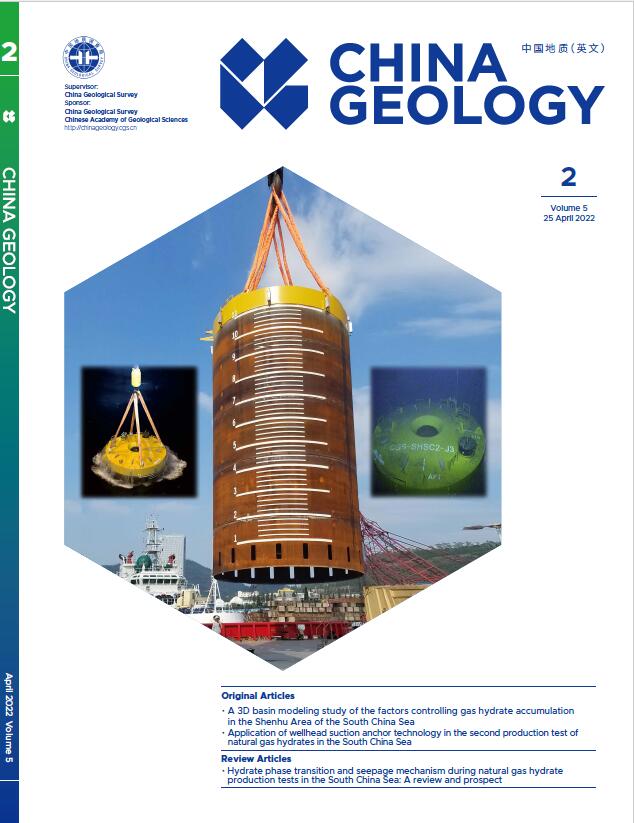

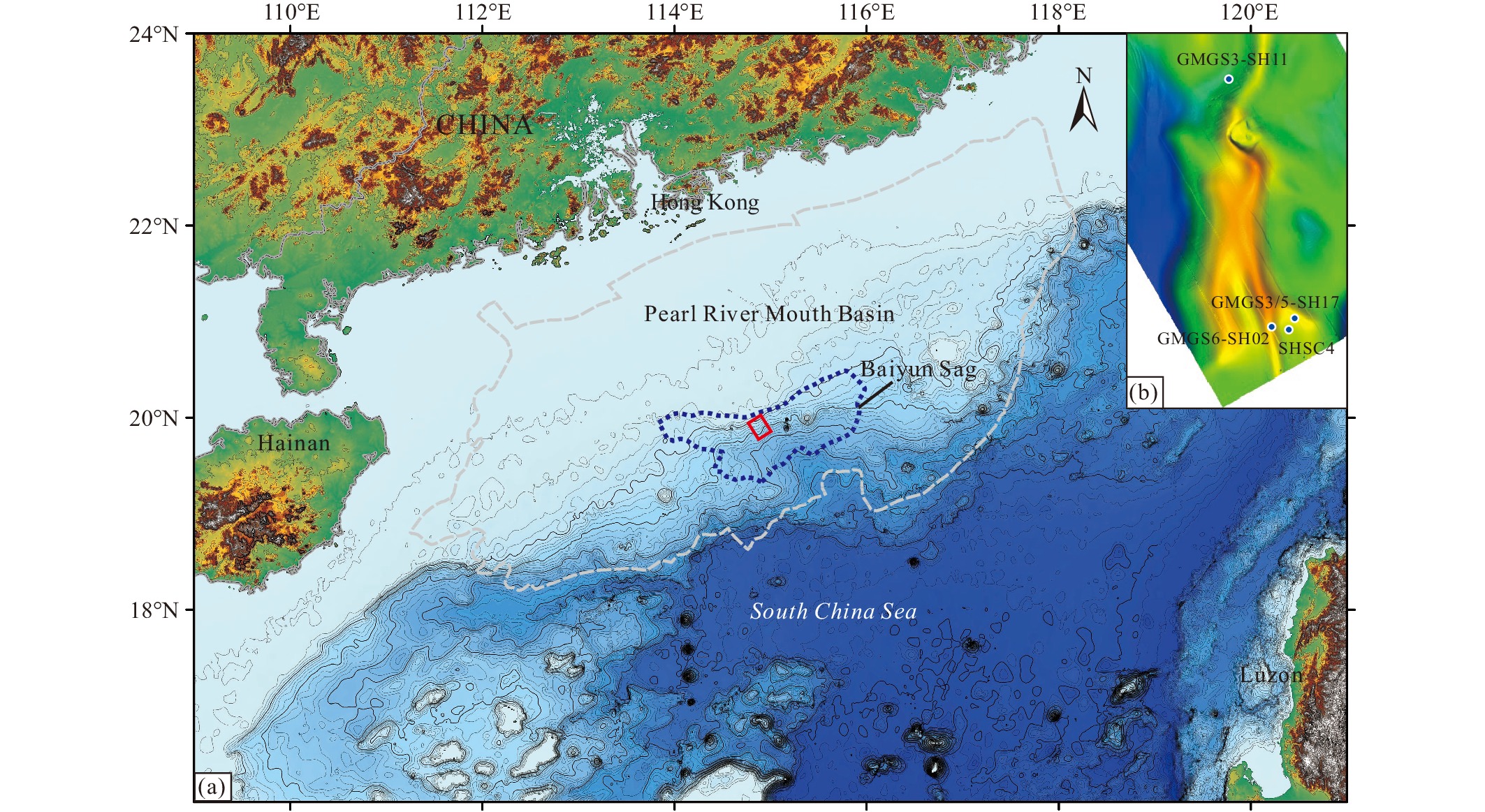

 DownLoad:
DownLoad:
